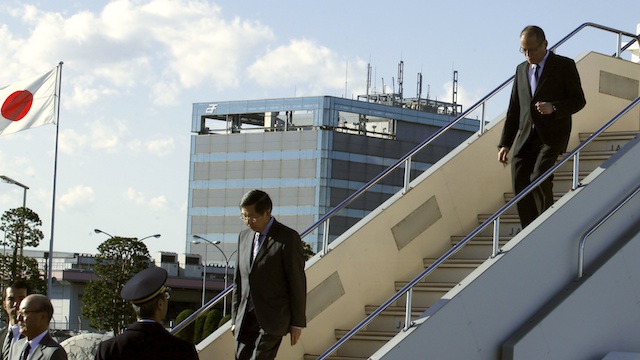SUMMARY
This is AI generated summarization, which may have errors. For context, always refer to the full article.

MANILA, Philippines – President Benigno Aquino III vowed the government would not only rebuild areas hit by disasters in 2013, but make new structures more disaster resilient.
During his trip to Japan, Aquino told the Filipino community on Thursday evening, December 12, the government is guided by one principle: to build back better.
“Matapos ang relief, ibabangon natin ang mga apektadong komunidad sa kasalukuyan, at sisiguruhin na magiging mas matatag ang kanilang kinabukasan. Ang mga komunidad sa peligrosong lugar, ilalayo na natin para makapag-panibagong buhay sa mas ligtas na lugar,” he said.
(After the relief, we will help rehabilitate affected communities and make sure they have a more stable future. We will move communities in dangerous areas away so they can start new lives in safer places.)
Relief assistance for victims of Super Typhoon Yolanda (Haiyan) has reached over a billion pesos, Aquino said. The super typhoon struck Central Visayas on November 8 and left over 6,000 dead. Aquino said the government also continues to aid 918,000 families whose homes were destroyed by the storm.
Livelihood
Aquino said part of the government’s rehabilitation efforts would also address livelihoods, so that victims can lead better lives. Aquino said coconut farmers would be taught intercropping to increase their earnings, “so when they rise again they will not just return to normal but be in a better status.”
During his speech, Aquino also took the time to slam his critics, specifically some members of the media who criticized government’s post-Yolanda efforts as subpar. Both local and international media questioned the slow pace of government aid after the typhoon.
“Kayo nga kaya ang pumunta dito at subukan niyo ang magagawa ninyo (Why don’t you try to be in my shoes and let’s see what you can do),” he said.
Aquino said as leader, however, he could not give up “even when I get annoyed by those politicking during the crisis.” The President did not mention any names, but was an apparent reference to Mayor Alfred Romualdez of hard-hit Tacloban, who accused the national government of not helping his city enough.
During the event, Aquino received Y1 million or P426,007 in donations from the Filipino community for the victims of Yolanda. The amount represented profits from the Philippine Barrio Fiesta Festival in Yokohama which drew 100,000 visitors. The Filipino community also plans to donate their collections from Simbang Gabi to Yolanda victims.
The government is currently working on a comprehensive Recovery and Reconstruction Plan for Typhoon Yolanda, which, Aquino said, would ensure the continuous provision of food and relief operations, shelter assistance, as well as livelihood support for victims.
The full plan will be unveiled next week during a forum with government’s development partners. The plan is based on a “build back better” principle, aimed at better disaster resilience.
Construction
Following a full Cabinet meeting on Tuesday, Presidential Communications and Operations Office Secretary Herminio “Sonny” Coloma Jr announced government plans to “provide the foundations for the short-term actions that will take up to 12 months, and the medium-term actions that will take up to 4 years to complete.”
Among the “critical immediate actions” that will be carried out within the next months are construction activities by the Department of Public Works and Highways (DPWH). The department will build temporary shelters and bunkhouses, and rebuild and repair damaged roads, bridges, airports, ports, and utilities, in accordance with affordable disaster-resilient standards.
The rebuilding, repair and re-equipment of schools, clinics, and health stations, as well the deployment of staff is another priority.
“The attainment of disaster-resilient standards is a ‘critical immediate action’ with respect to public infrastructure damage, while for social services such as health and education, a longer time frame for implementation is needed to attain the affordable disaster-resilient standards,” Coloma explained.
Additionally, the reconstruction of municipal halls, public markets, and multi-purpose facilities that may also serve as temporary shelters and evacuation centers for 171 local government units, 46 cities, and 125 municipalities in the severely affected areas will be given priority.
“The Cabinet focused anew on the critical immediate actions that are now being implemented to usher in the recovery phase, while the relief phase is tapering off,” Coloma said. – Rappler.com
Add a comment
How does this make you feel?
There are no comments yet. Add your comment to start the conversation.